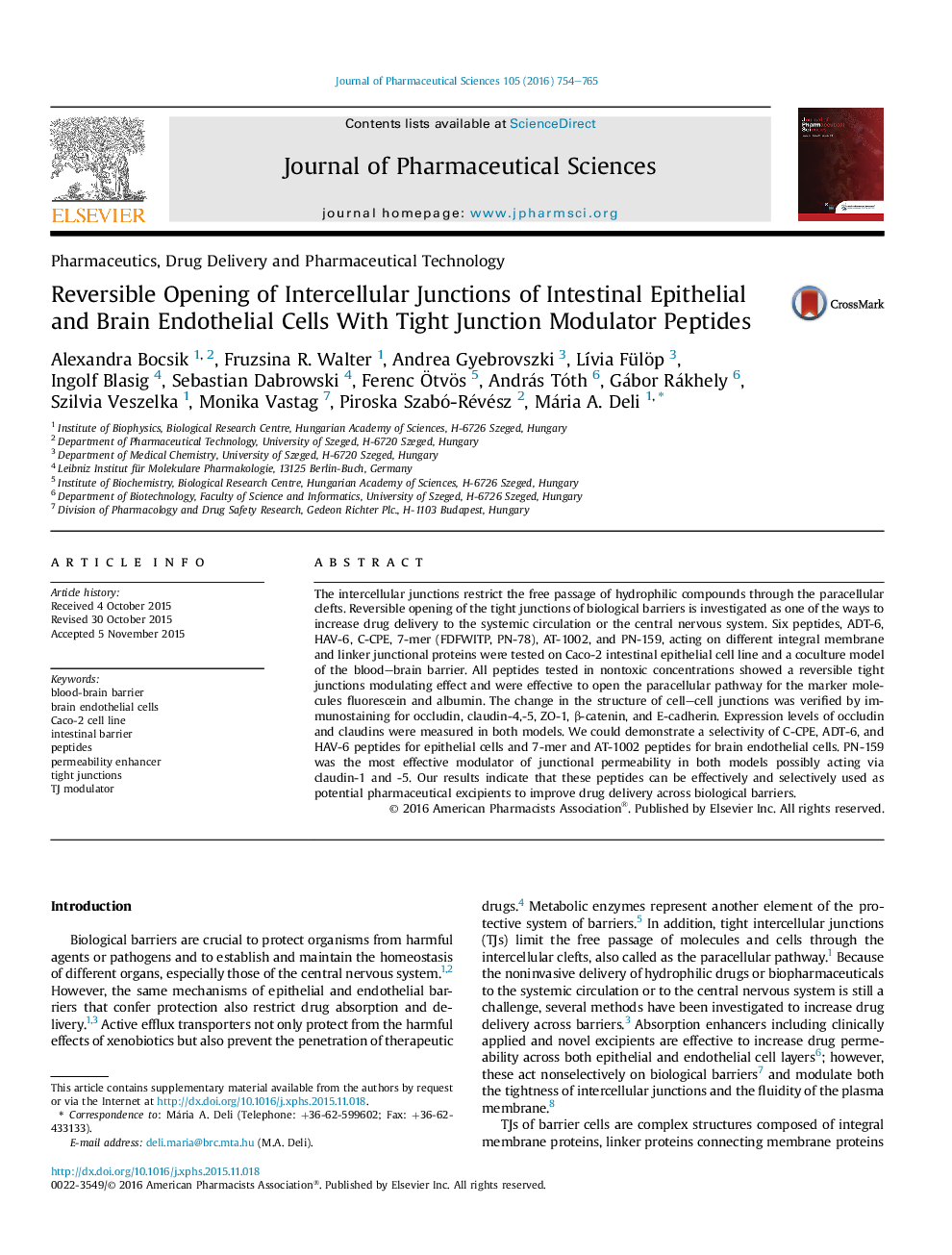| Article ID | Journal | Published Year | Pages | File Type |
|---|---|---|---|---|
| 2484279 | Journal of Pharmaceutical Sciences | 2016 | 12 Pages |
Abstract
The intercellular junctions restrict the free passage of hydrophilic compounds through the paracellular clefts. Reversible opening of the tight junctions of biological barriers is investigated as one of the ways to increase drug delivery to the systemic circulation or the central nervous system. Six peptides, ADT-6, HAV-6, C-CPE, 7-mer (FDFWITP, PN-78), AT-1002, and PN-159, acting on different integral membrane and linker junctional proteins were tested on Caco-2 intestinal epithelial cell line and a coculture model of the blood-brain barrier. All peptides tested in nontoxic concentrations showed a reversible tight junctions modulating effect and were effective to open the paracellular pathway for the marker molecules fluorescein and albumin. The change in the structure of cell-cell junctions was verified by immunostaining for occludin, claudin-4,-5, ZO-1, β-catenin, and E-cadherin. Expression levels of occludin and claudins were measured in both models. We could demonstrate a selectivity of C-CPE, ADT-6, and HAV-6 peptides for epithelial cells and 7-mer and AT-1002 peptides for brain endothelial cells. PN-159 was the most effective modulator of junctional permeability in both models possibly acting via claudin-1 and -5. Our results indicate that these peptides can be effectively and selectively used as potential pharmaceutical excipients to improve drug delivery across biological barriers.
Keywords
Related Topics
Health Sciences
Pharmacology, Toxicology and Pharmaceutical Science
Drug Discovery
Authors
Alexandra Bocsik, Fruzsina R. Walter, Andrea Gyebrovszki, LÃvia Fülöp, Ingolf Blasig, Sebastian Dabrowski, Ferenc Ãtvös, András Tóth, Gábor Rákhely, Szilvia Veszelka, Monika Vastag, Piroska Szabó-Révész, Mária A. Deli,
